Fast-growing trees can be a blessing when you need shade, a bit of privacy or if you need to block an unattractive view of your neighbors. It’s tempting to choose trees that grow as quickly as possible, but sometimes the fastest-growing trees are the worst choices. This is because many fast-growing trees grow so quickly that they have invasive roots or weak wood, and they can become riddled with disease or suffer from severe insect pest infestations.
From evergreens to trees with showy flowers or bright fall color, you have lots of options when choosing fast-growing shade trees. A number of these trees have noninvasive roots that won’t wreck elements of your hardscape such as patios, paving, walls and fountains. As a bonus, many also have branches that resist breakage and are thus less likely to fall and pulverize your patio railing, trellis or garden fence. Here are some of the popular fast growing trees you need to know:
- Lacebark Elm
- American Sweetgum
- River Birch
- Silver Maple
- Baldcypress
- Norway Spruce
- Quaking Aspen
- Weeping Willow
- Dawn Redwood
- Cleveland pear
- Grevillea robusta
- Callery pear
- Balsam Fir
- Hybrid Poplar
- Loblolly Pine
- Silver Dollar Eucalyptus
- Tuliptree
- Sun Valley Maple
- Japanese Cherry Birch
- Casuarina tree
- Sawtooth Oak
- Princeton Elm
- Linden Tree
- Japanese zelkova
- Chinese pistache
- Japanese pagoda
- October glory maple
- Pink Dogwood
- Cryptomeria Radicans
- Mimosa Tree
- Moluccan albizia
- Redmond American Linden
- Texas Madrone
- Moringa Oleifera
- Western White Pine
- Shining Gum
- Lemon-scented gum
- Southern Magnolia
- Tahitian Lime
- Magnolia Teddy bear
- Blueberry Ash
- Reed Avocado
- Bracelet Honey-Myrtle
- Australian Willow
- White Mulberry tree
- Tamarack tree
- Cider Gum
- Leyland Cypress
- European black alder
- Mexican Sycamore
- Mexican White Oak
Lacebark Elm

This tree grows at a medium to fast rate, with height increases of anywhere from 14 inches to more than 24 inches per year. A lacebark elm is considered mature when it is roughly 50 feet tall, though some trees may top out at 40 feet and a crown spread of 30 to 35 feet, depending on factors like tree health and crown vigor, since leaves are responsible for gathering energy. A healthy tree may therefore reach maturity in as little as 10 years.
Sweet gum
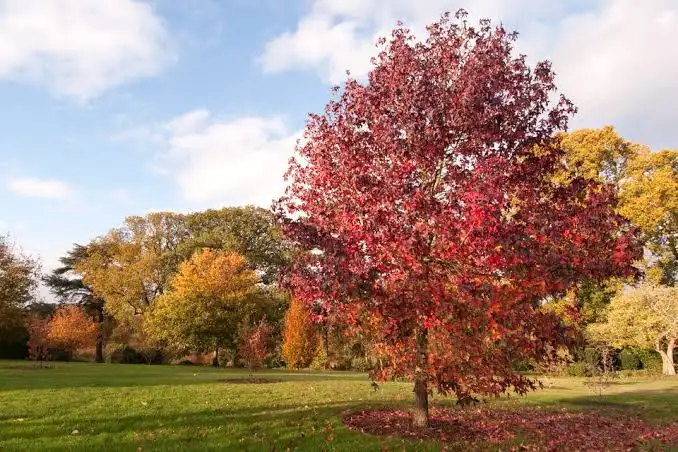
A sweet gum is a deciduous tree in the witch hazel family that ranges in height from 60 to 100 feet and has a narrow oval canopy. The Sweetgum growth rate is moderate to rapid, putting on height at a rate of 1 to 4 feet a year for the first five to 10 years and 12 to 15 inches per year thereafter. It is glossy green in the spring and summer, turning to vivid red, yellow and even purple in the fall.
River Birch

River Birch range from 40 to 70 feet tall, with canopy widths of between 15 to 35 feet. River birch trees grow rather quickly, at a rate of about 1.5 feet per year, although the growth rate varies depending on the growing conditions and age of the tree.
Paper birch

With bark similar to a thick piece of paper, paper birch trees can grow up to 75 feet tall. They flourish in areas with partial or full sunlight and usually grow somewhere between 13 and 24 inches per year. Depending on the region, these fast-growing trees usually live between 30 and 100 years, with hotter regions contributing to shorter lifespans.
Silver maple

This species, known botanically as Acer saccharinum, grows to an impressive size with large branches that form a pleasing vase-like shape. Silver maple is a fast growing tree, often growing 4-6 feet in height each year. At maturity, silver maple trees are quite large, reaching more than 50 feet in both height and spread.
Baldcypress

Baldcypress grows moderately fast, generally 1 to 2 feet per year. Although it’s naturally found in floodplains, river channels, and millponds, expect better growth in moist, well-drained soils in full sun. Most landscape specimens tend to grow 50 to 70 by 20 to 30 feet high and wide. Young trees develop a narrow to broadly pyramidal crown; with age the crown becomes broad and flat-topped.
Norway Spruce
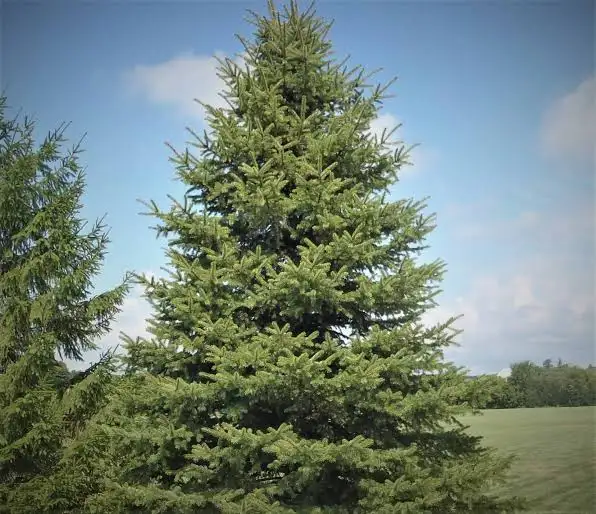
The Norway Spruce is a fast growing evergreen that has dark green needles that are 1 inch long, and can grow up to 5 ft a year in a good weather year. It never drops its needles but keeps them on for up to 10 years. Its branches extend to the ground, giving excellent wind protection. Growing a Norway Spruce tree is relatively easy. The main things the tree will need are space, enough water and light, adequate humidity and good drainage.
Quaking aspen tree

Quaking aspen tree, also called trembling aspens, are named for their leaves. Flat leaves attach to branches with lengthy stalks called petioles, which quake or tremble in light breezes. Aspens are small and won’t overwhelm your yard, and sometimes they provide nice autumn color. The quaking aspen grows to a height of 40–50 feet and a spread of 15–20 feet at maturity. It grows at a fast rate, with height increases of more than 24 inches per year.
Weeping willow

The weeping willow is probably the best known of the weeping trees, with gracefully arching stems that dangle delicately and shiver in the breeze. The weeping willow is a rapidly growing tree, which means it is capable of adding 34 inches or more to its height in a single growing season when young, but their average lifespan is a relatively short 30 years. The best planting sites are on the bank of a creek, lake or pond. Give it plenty of space and do not plant it near underground water or sewer pipes or tanks: its roots will stretch to great lengths in search of water.
Dawn Redwood tree

Dawn Redwood trees grow at an extremely fast rate, often exceeding the growth of two feet per year. These fast-growing trees can reach between 90 and 100 feet tall. One Dawn Redwood tree is known to have grown to a height of 120 feet in just 30 years. Dawn Redwoods prefers moist soil and full sunlight but can grow in a range of conditions, tolerating both drought and minimal flooding. They’re resistant to heat and pests.
Cleveland pear tree

Cleveland pear trees are ornamental trees prized by landscapers for their looks and ability to grow just about anywhere. They do not grow fruit, are easy to maintain, grow fast and need little water, which is why they are often used as shade trees for commercial and residential developments. Cleveland pear tree grows at a fast rate, with height increases of more than 24″ per year. Mature trees top off at about 30 feet.
Southern Silky Oak
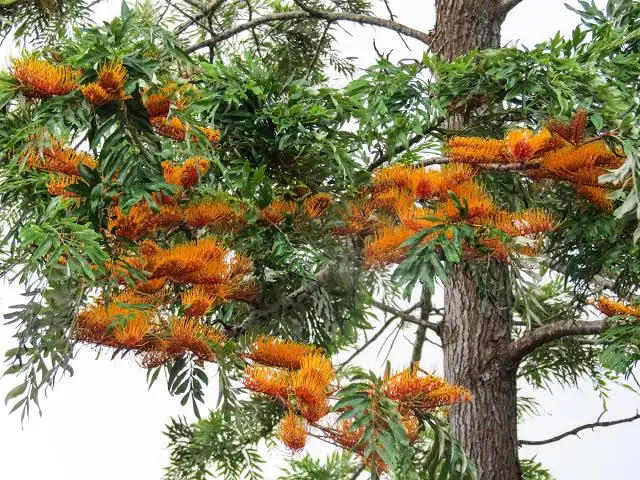
Grevillea robusta, commonly known as the southern silky oak, silk oak or silky oak, silver oak or Australian silver oak is a medium to large tree commonly planted as an ornamental in many warm-temperate and semitropical climates. It has been established as a forest tree in some countries and shows promise as a fast-growing timber tree. When it is planted singly or in lines, annual growth rates of 2 m (height) and 2 cm (diameter) over the first 5 years are commonly achieved in a number of countries where climate and soils are suitable.
Callery pear
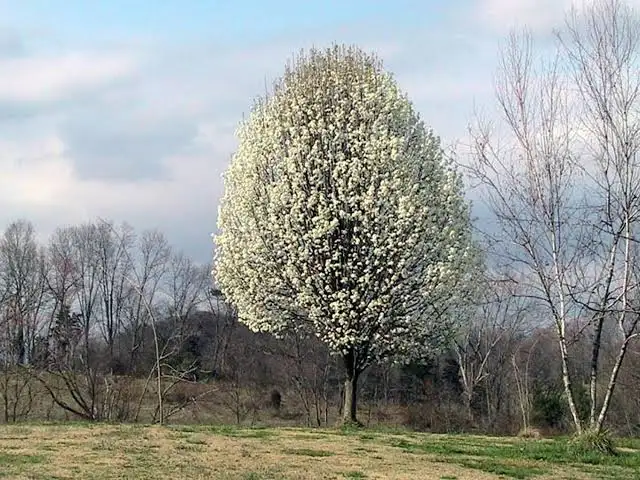
Callery pear is a medium-sized ornamental deciduous tree with a uniform rounded to oval upright form, early spring flowers, glossy green foliage and respectable fall color. Callery pear thrives in a wide variety of environments and grows rapidly, often attaining heights of between 12-15 feet in a 6- to 8-year period. In the landscape, callery pear is a single stem tree; in unmanaged areas, it can rapidly spread to form dense thickets.
Balsam Fir
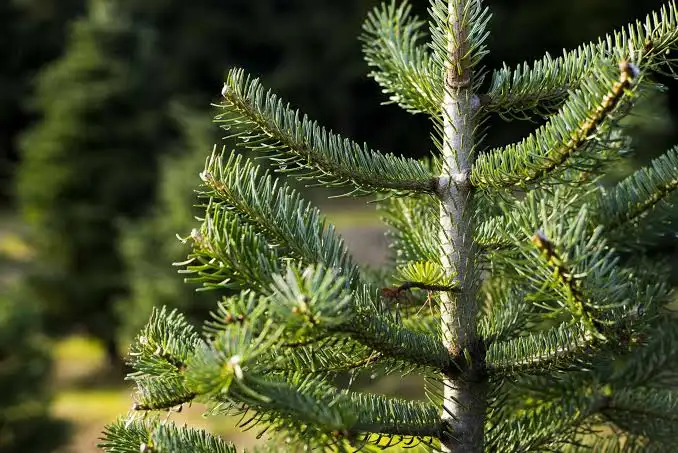
Balsam Fir is a small to medium-sized conifer found in boreal forests in the Adirondacks. It has aromatic foliage, grayish-brown bark with multiple resin blisters, and short, flat needles which are friendly to the touch. Given ideal conditions, balsam fir trees grow about a foot (0.5 m.) a year. They quickly become the evenly shaped, dense, conical trees.
Hybrid poplar

Hybrid poplar trees grow in a pyramidal form, with triangular leaves that are 3-6 inches long and silvery-green on the top, with paler green undersides. In fall, the foliage is brilliant yellow, and their leaves drop in winter. Hybrid poplar trees are an excellent choice for anyone trying to grow a shade tree or living privacy screen quickly. These towering trees can grow 5-8 feet per year until reaching a maximum height of around 50 feet. They are low-maintenance and able to grow in a wide range of soils and light conditions.
Loblolly Pine

Loblolly Pine is an evergreen gymnosperm tree that may grow 60 to 90 feet tall. The tree is loosely pyramidal in youth and develops a dense oval crown at maturity as it loses its lower branches. Rate:This tree grows at a fast rate, with height increases of more than 24 inches per year. The tree has slender needles in clusters of 3. As the tree ages, the bark thickens forming irregular, flaky plates that reveal a dark chocolate color when removed. In spring, red to yellow male flowers and yellow to purple female flowers mature in clusters.
Silver dollar eucalyptus
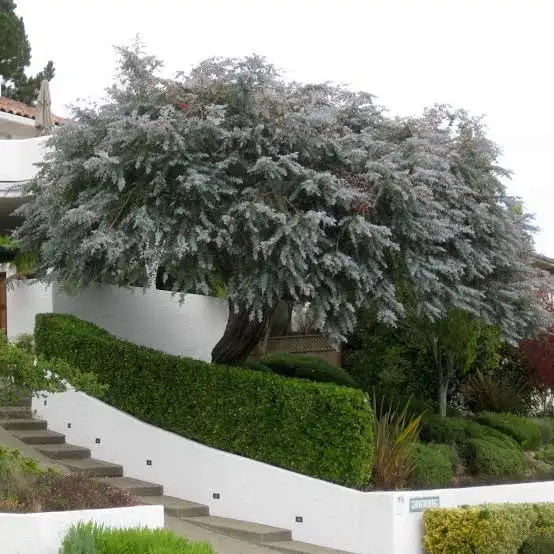
Botanically, the silver dollar eucalyptus is known as the Eucalyptus cinerea. It is also referred to as the Argyle apple and mealy stringybark. This fast growing tree is drought and heat tolerant. While this tree can grow up to 40 feet tall, it will stay smaller in small spaces. The blue green leaves hold the scented oil that gives the tree its lovely smell. The silver dollar eucalyptus has pretty white flowers, attractive bark, and distinctive foliage. How long it takes a silver dollar eucalyptus to achieve the size of 40 feet depends on climate and growing conditions.
Tulip poplar

Tulip poplar also called yellow poplar and tulip tree, is a sprawling shade tree that grows from 60 to 90 feet high with a crown spreading from 30 to 50 feet. Tulip poplars have a fast to medium rate of growth. They grow rapidly when they are young, but their rate of growth slows to a medium rate as they get older. A fast growth rate means more than 25 inches a year. A medium growth rate means 13 to 24 inches a year. You can usefully plant a tulip tree for shade in a park or large lawn, but they are not good for restricted urban areas because they need a lot of space.
Sun Valley Red Maple

The Sun Valley Red Maple is a compact form of the red maple, which is ideal for smaller gardens, or where a full-sized tree would be too large. It grows more moderately fast and matures between 20 and 35 feet tall, rather than the normal tree, which is over 40 feet tall. Its upright branches mean it also has a narrower spread, so it can be planted in more restricted spaces. It may be smaller, but its fall colors are just as powerful, ranging from brilliant orange-reds to darker burgundy-reds. It is an ideal choice for a smaller lawn, or anywhere a smaller tree is needed in restricted spaces.
Casuarina tree
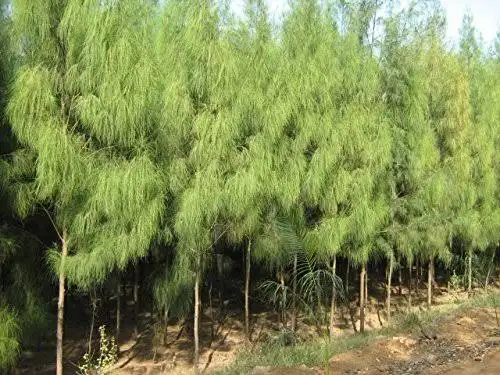
Fast-growing casuarina trees can reach heights of 60 to 100 feet tall. Their long, wispy needles are a medium green. They flower with small yellow, red or brown flowers, and they grow tiny, seed-filled cones in the late summer and fall. Although most common in coastal areas, casuarina trees are often found inland in warmer climates. The tree’s resistance to salt helps it flourish in ocean-side areas where most trees can’t grow. The Casuarina equisetifolia variety grows almost exclusively on beaches.
Sawtooth Oak

Sawtooth Oak is a medium-sized tree from Asia that grows up to 75 feet tall and is broad pyramidal becoming oval. It can produce acorns as young as 10 years of age and acorns are produced profusely on mature trees that are bitter and not a favorite of wildlife. Fall foliage is yellow, but brownish in the south and tardily deciduous. Sawtooth Oak grows quickly, relative to other Oaks. Generally this tree grows at a medium to fast rate, with height increases of anywhere from 14 inches to more than 24 inches per year.
Princeton American elm

The Princeton American elm is exceptionally fast growing with large leathery foliage. Princeton Elm will grow to be about 70 feet tall at maturity, with a spread of 50 feet and is distinguished by its dense, symmetrical, upright form and dark green foliage, ultimately forming a broad umbrella crown. Crotch angles can be acute, with considerable bark inclusion which can later lead to branch breakages. Tolerant of many site conditions, this tree is a great choice for urban and suburban planting. This tree grows at a fast rate, with height increases of more than 24″ per year.
Linden trees
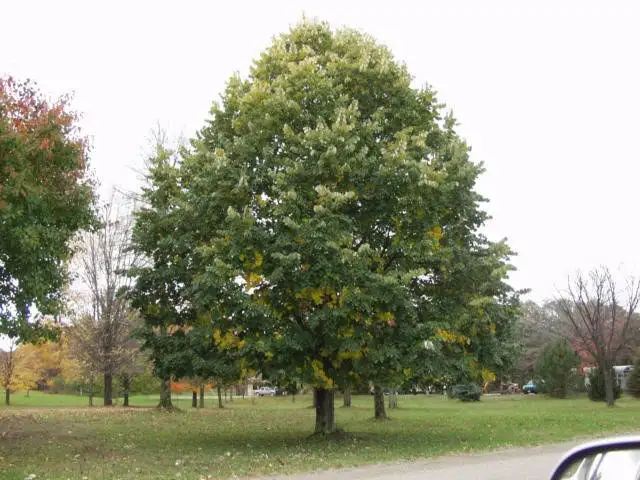
Lindenwood trees also known as basswood, lime trees and linden, are medium- to large-sized trees. Grown as shade trees, the lindenwoods are tolerant of most soil types and thrive in urban settings. As a medium-sized shade tree, the lindenwood is often seen at heights of 40 to 50 feet, but can grow to 90 or 100 feet. Young lindenwood trees have a pyramidal shape, but as they mature they develop a more rounded crown atop a tall, straight trunk. The trunk is cylindrical, free of hanging branches and ranges in diameter from 2 feet to 6 feet on mature trees. Growth rate for lindens is fast to medium; a linden tree gains about 14 to 24 inches a year in height.
Texas Madrone
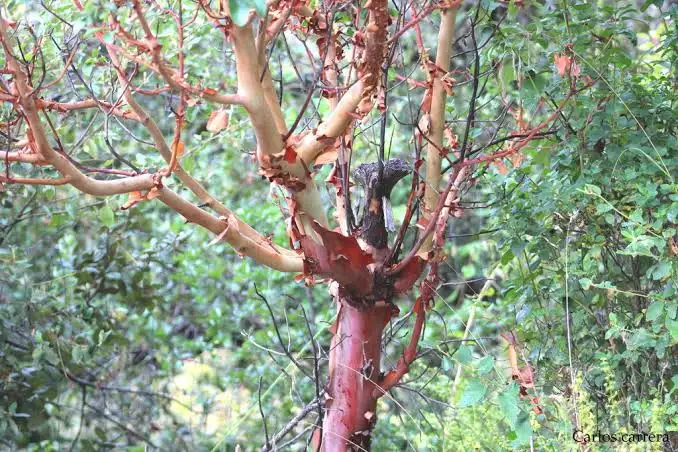
Texas Madrone (Arbutus xalapensis), is a medium sized trees that grows to maturity and produce fragrant, white flowers in spring, masses of orange or red berries in summer or fall, and interesting peeling bark in shades of red and brown. This species is endowed with strong branches and roots that won’t cause damage to your hardscape and can grow as fast as 36 inches per year to reach its typical maximum height and width of 50 and 25 feet, respectively. Although Texas madrone may litter the ground with its fruit and bark, it has a high fire-resistance rating.
Japanese Zelkova
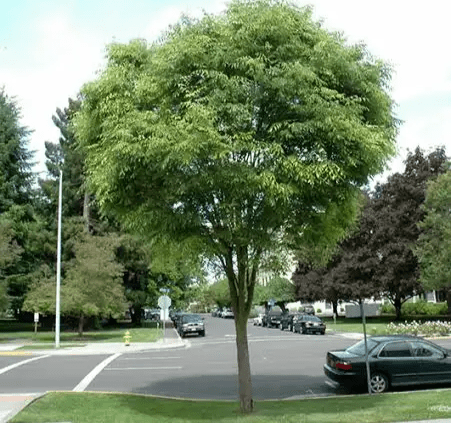
Japanese Zelkova is a tough urban tree for residential shade and street plantings. It has a spreading, generally upright branching, vase-shaped habit. The crown is shorter and more rounded than the American elm. The bark is a smooth, reddish brown when young with prominent cherry-like lenticels. As the tree ages, the outer bark is gray-brown and often exfoliating exposing an orangish inner bark. Medium green leaves turn to shades of yellow, orange, brown, deep red to reddish-purple in fall. This tree grows at a moderately fast rate, with height increases of 14–24 inches per year.
Chinese Pistache

The pistache is cold hardy, pest and disease resistant, and a fast growing tree. With good management, they may add as much as 2 to 3 feet of growth each year. Chinese pistache grows to 25 to 40 feet tall and 25 to 30 feet wide at maturity, and once established, they are very drought tolerant. There are male and female trees. Its main branches may be upright to arching. This species is planted as a street tree in temperate areas worldwide due to its attractive fruit and autumn foliage.
Japanese pagoda tree

The Japanese pagoda tree has outstanding ornamental value, can be grown in a wide variety of conditions, and is, for the most part, easy to maintain. The leaves of the Japanese pagoda tree are especially attractive. They are a bright, happy shade of green and reminiscent of a fern leaf since each is composed of a grouping of some 10 to 15 leaflets. The foliage on this deciduous tree turns a brilliant yellow in autumn. The Japanese Pagoda Tree grows to a height of up to 6m, with a spread of 6m, and has a moderately fast growth rate of about 25 inches per year.
October glory maple

The October glory maple tree is actually a cultivar of the more common red maple or Acer rubrum. These trees grow well under a variety of conditions. Its most distinguishing characteristic, its scarlet red autumn foliage, begins in early October, as the name suggests. The spectacular scarlet coloration persists for weeks. This tree grows at a medium to fast rate, with height increases of anywhere from 18 inches to more than 24 inches per year. Overall, the tree grows between 40 to 50 feet tall with a 25 to 35 feet spread. It also attracts birds, squirrels and other small wildlife.
Pink Dogwoods
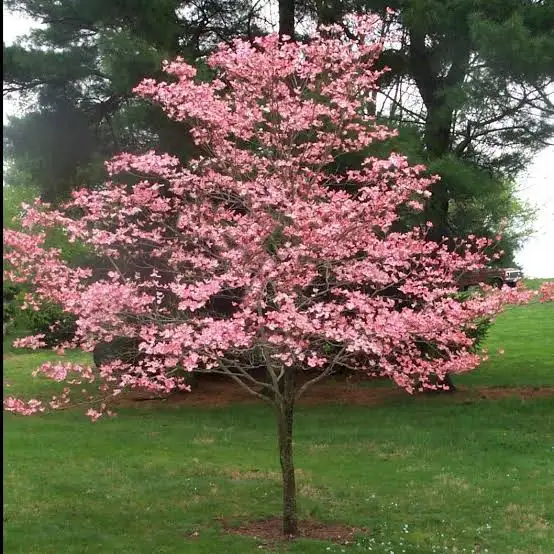
Like other dogwoods, the pink varieties are very good landscape trees for the rest of the year, too, with green foliage that turns purplish in fall, and reddish berries that draw butterflies and birds. The attractive, textured gray to brown bark, red berries, and the beautiful shape of this tree keep it interesting even throughout winter. In ideal light conditions, the pink flowering dogwood can grow up to 40 feet tall with a wide, rounded canopy. The average lifespan of pink flowering dogwoods is about 80 years, but some individuals have been known to live past 100 years.
Cryptomeria japonica ‘Radicans‘

Cryptomeria japonica ‘Radicans‘ is a robust, fast-growing selection of Japanese cedar with columnar to pyramidal growth habit. It has dense, blue-green, feathery foliage that retains its color in winter with less bronzing than other Japanese cedars. After 10 years, ‘Radicans’ grows to heights of 30 to 40 feet (10-12 m) tall. It is less prone to tip blight and leaf spot but is more susceptible to root rot when young. Whether standing alone or grouped together the Cryptomeria Tree exudes beauty. It’s easy to see why this is the national tree of Japan and routinely planted at shrines and temples.
Mimosa Tree
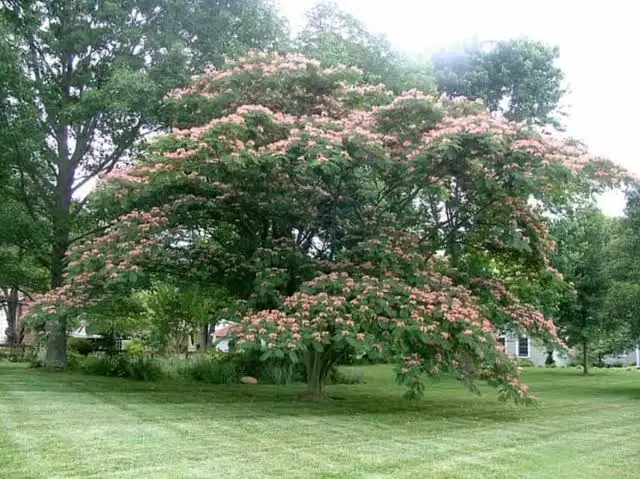
Albizia julibrissin, the Persian silk tree, pink silk tree or commonly Mimosa trees will grow in a variety of soil types and take advantage of sunny areas, growing up to twenty-five feet tall. Mimosas produce large amounts of seed pods containing five or more small brown seeds which typically persist on the plant though the winter. Seeds, which can remain dormant for years, are normally dispersed in close proximity to the parent plant; however, they can be spread by water or wildlife. The growth rate of the tree is fast, frequently earning the Mimosa Tree as much as 5 feet in a growing season.
Moluccan albizia

Also known as Moluccan albizia, Batai or Falcataria moluccana is commonly cultivated in South and Southeast Asia. It grows usually about 40 m tall with a massive trunk and an open crown. The leaves are twice pinnately compound with small leaflets. The flowers are small, creamy white in color, and are faintly fragrant. It is fast growing but sensitive to strong winds. The wood is soft, not durable, and is vulnerable to attack to by termites and powder-post beetle.
Redmond American Linden

Redmond American Linden (Tillia americana ‘Redmond’) provides insignificant, but fragrant, green or yellow flowers, dense shade and gold leaves in autumn. This tree, also called basswood, grows about 36 inches annually, reaches up to 70 feet tall and 45 feet wide at maturity and isn’t likely to lose branches or damage hardscape. On the downside, this species can succumb to a number of pest and disease problems, including aphids, borers, scales, anthracnose, canker, powdery mildew and rust.
Moringa oleifera

Moringa is a small to medium evergreen or deciduous tree that can grow to a height of 10-12 m. It has a spreading open crown, typically umbrella-shaped. Moringa is a drought-resistant tree that can reach a height of 33–39 feet and trunk diameter of 45 centimetres (18 inches). The bark has a whitish-gray color and is surrounded by thick cork. Young shoots have purplish or greenish-white, hairy bark. The tree has an open crown of drooping, fragile branches, and the leaves build up a feathery foliage of tripinnate leaves.
Western white pine
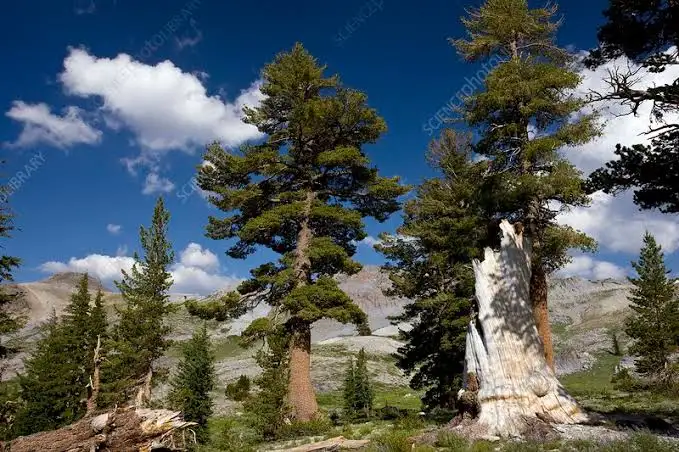
Western white pine, also called silver pine and California mountain pine. It is the state tree of Idaho and is sometimes known as the Idaho pine. Western white pine thrives in a variety of environments, ranging from peat bogs to dry, sandy, or rocky soil. It does best on sites that are rich in nutrients and well drained, in moist valleys and on gentle northern slopes. The tree grows, up to 60 metres high. It usually grows in closed groups of trees and has a short, open crown. When the trees are young, the bark is thin, smooth, and greyish-green. It turns darker as it gets older and forms deep, vertical grooves, with small rectangular scaly plates.
Southern magnolias
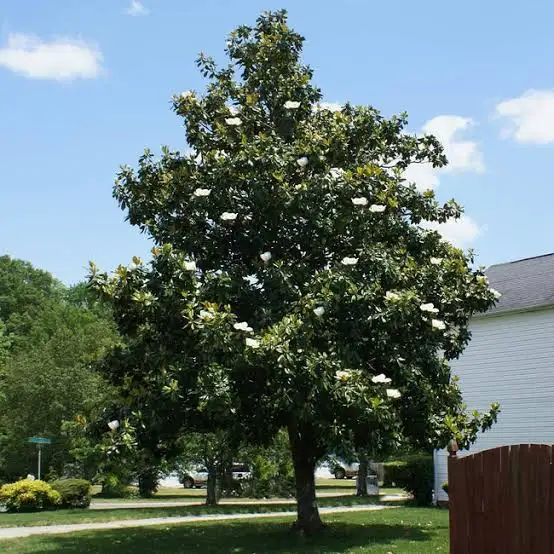
Southern magnolia, is a large, broadleaf evergreen tree that is noted for its attractive glossy dark green leaves and its large, extremely fragrant flowers. Southern magnolias grow from 1 to 2 feet a year, reaching 60 to 80 feet tall with canopies spreading 30 to 50 feet wide. The trunk is straight and features closely-spaced scales with a grayish-brown coloration. This is a magnificent tree for planting as a specimen in the South in large yards, parks, or commercial sites.
Tahiti lime
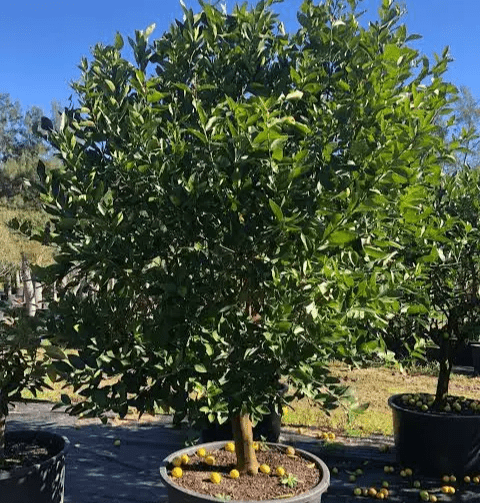
Persian lime, also known by other common names such as seedless lime, Bearss lime and Tahiti lime is an evergreen, medium size tree with slightly drooping branches and a spreading habit. It can be quite vigorous, growing to around 6m x 6m after 10 years.
Teddy Bear

Teddy Bear typically gets no taller than 20 feet high and 12 feet wide, making it an ideal specimen or accent plant for small outdoor spaces. Teddy Bear comes with the magnolia’s characteristic shiny, green leaves and showy, sweetly fragrant, white blooms.
Blueberry Ash

Blueberry Ash is a fabulous tree that grows to height that ranges from 8m-15m depending on local conditions but they only spread 3m-4m wide. It looks great in many different garden styles including cottage, seaside, formal or native and can be grown as a feature tree, screen or just in a large pot on a balcony. In spring and summer the trees are covered in soft white or pink frilly flowers, followed by blue berries that last through winter and often into the next spring. The leaves are attractive too with bronze/pink new growth that changes to green as they age.
Bracelet Honey-Myrtle

Melaleuca armillaris is a handsome evergreen shrub or small tree growing to 3-5m tall and 3-5m wide. It has soft, dark green, needle-like leaves and attractive, creamy white, cylindrical, flower spikes in spring. The bark becomes more characterful as it ages by furrowing and peeling back in typical paperbark fashion. It grows quickly and thickly in almost any soil, making a good screen or hedge for new properties.
Australian Willow
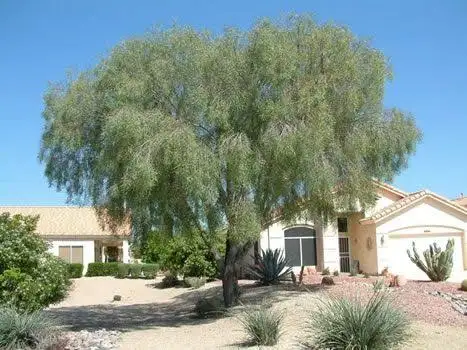
This Australian Willow, Geijera parviflora, is a medium-sized tree that combines the gracefulness of a Willow tree with the toughness of a Eucalyptus tree. From Australia, this fine-textured evergreen beauty features attractive gray/green foliage with droop down hanging leaves that give it its Weeping Willow effect. The olive green leaves are pleasantly aromatic, and as the tree matures, it produces loose clusters of small, fragrant, creamy white flowers in early spring that can sometimes go into early fall. This evergreen tree likes an arid climate and one with blooming flowers is sure to attract pollinators.
White mulberry
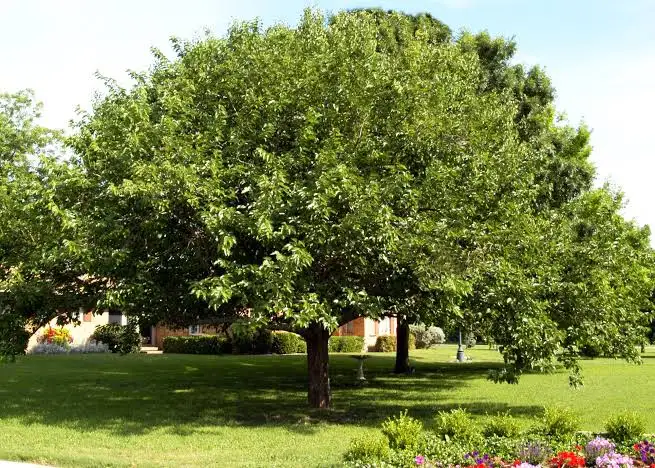
Morus alba, known as white mulberry, common mulberry and silkworm mulberry, is a fast-growing, small to medium-sized mulberry tree which grows to 10–20 m (33–66 ft) tall. It is generally a short-lived tree with a lifespan comparable to that of humans, although there are some specimens known to be more than 250 years old. White mulberry trees are very fast growers that are not particular about soil type. They will grow in clay, loam or sandy soil, whether it be alkaline or acidic. They prefer full sun, but can grow in part shade.
Tamarack

The tamarack or eastern larch is a deciduous conifer that can grow to be 40 feet to 80 feet tall with a spread of 15 feet to 30 feet, it has a straight upright form. The bark is rough with a reddish-brown color. Twigs and stems are light brown and covered with tiny spurs or pegs. Needles are soft and flat and about an inch in length. They grow in clusters on the spurlike branches, they are bright green in the spring and summer, they then turn to yellow in the fall before falling from the tree.
Leyland cypress
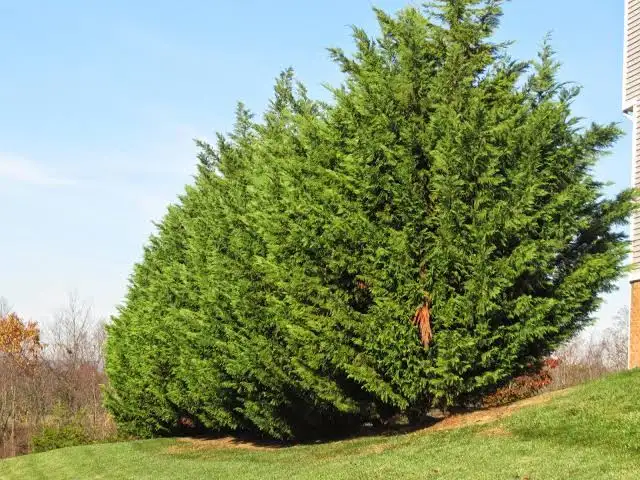
Leyland cypress is a fast-growing tree that can reach 70 feet tall and 15 feet wide. When young, it grows up to 3 feet a year. It has a dense, narrow pyramidal or columnar shape, resembling its Nootka false cypress parent in shape, foliage and winter hardiness. They are dark green, somewhat paler on the underside, but can have different colors, depending on the cultivar. The crown of many forms is broadly columnar with slightly overhanging branch tips. The branches are slightly flattened and densely populated with scaly needles. The tree bark is dark red or brown and has deep grooves.
European black alder

Growing 40 to 60 feet tall, black alder is typically tall and narrow but sometimes pyramid-shaped. It can be identified by its large, glossy green, oval to round leaves with toothed margins. The tree has dangling catkins in early spring and cone-like fruits in fall. Young leaves and shoots are often sticky from resin. The seed are dispersed by wind and, if they fall on water, can be spread for long distances. Along stream beds and in other wet areas, it can form dense groves that displace native plants.
Mexican sycamore

As its name implies, this rapidly growing deciduous tree is native to central and northeastern Mexico. It has very large, beautiful, maple-shaped bright green leaves, with soft-white, fuzzy undersides. But probably the most stunning quality about this tree is its bark: a living work of art that gets more beautiful and intricate with age. Mexican sycamore trees can get up to 80 feet tall in their natural environment, but in most home landscapes they only reach to a height of about 50, with a canopy spread of 30 to 40 feet wide. Mexican sycamores are very drought tolerant once established, but they’ll perform much better if given plenty of irrigation for about the first 3 years after planting.